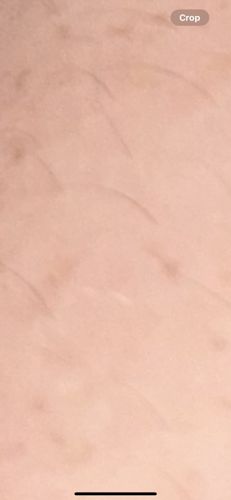Scabies Mite
Scientific Name: Sarcoptes scabiei var. hominis
Order & Family: Order: Sarcoptiformes, Family: Sarcoptidae
Size: Female mites are approximately 0.3-0.45 mm long and 0.25-0.35 mm wide. Males are slightly smaller, about 0.2-0.24 mm long and 0.15-0.2 mm wide. They are often too small to be seen with the naked eye.

Natural Habitat
The obligate parasitic scabies mite lives exclusively on and within the skin of its host, primarily humans. It is found globally, particularly in crowded conditions and areas with poor hygiene.
Diet & Feeding
In the parasitic adult stage, the scabies mite feeds on digested tissue fluids, blood, and cellular debris within the human epidermis as it tunnels.
Behavior Patterns
An adult female scabies mite burrows into the outer layer of human skin (stratum corneum) to lay eggs and defecate. These burrows appear as fine, wavy lines on the skin surface. Larvae hatch from eggs in 3-4 days, mature into nymphs, and then into adults. The entire life cycle from egg to adult is usually 10-17 days. Mites prefer warmer skin areas, such as skin folds, between fingers, and around wrists. Itching is often worse at night as mite activity increases.
Risks & Benefits
Potential risks include intense itching, skin rash, secondary bacterial infections due to scratching (impetigo, cellulitis), and in severe cases (crusted scabies), widespread skin lesions which can be highly contagious. There are no known benefits to humans or the ecosystem from the presence of scabies mites.
Identified on: 9/4/2025